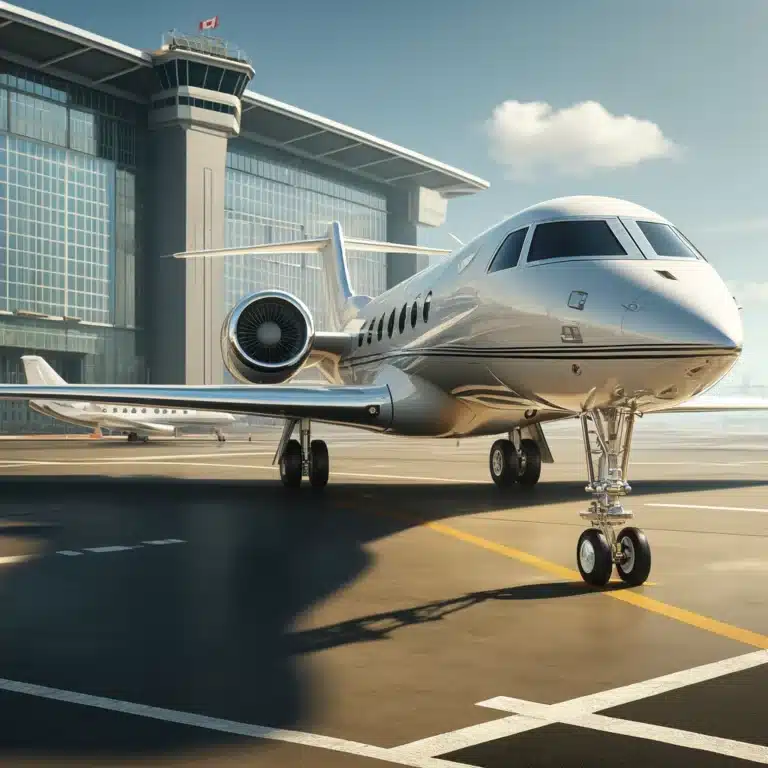Aviation Insurance: Types, Costs, Coverage, and Emerging Trends
Introduction
Aviation insurance plays a crucial role in safeguarding businesses, individuals, and service providers involved in the aviation industry. Whether you’re a commercial airline, private pilot, or drone operator, understanding aviation insurance policies and the emerging trends impacting the industry is vital. In this guide, we explore the types, costs, and coverage of aviation insurance while shedding light on current and emerging topics like insuring air taxis, space tourism, and cybersecurity in aviation.
Case Study Insuring Emerging Technologies – The Case of Urban Air Mobility (UAM)
Background
Urban Air Mobility (UAM) represents the future of urban transportation, offering innovative air taxi services that promise to alleviate congestion in cities. These new technologies, including electric Vertical Take-Off and Landing (eVTOL) vehicles, present unprecedented opportunities and risks. XYZ Insurance Services, a leading aviation insurance provider, recognized the need to support the emerging UAM sector with tailored insurance solutions.
Challenges
- New Risk Profiles: The combination of advanced automation, pilot training, and urban airspace presents new risk profiles that require specialized assessment.
- Regulatory Compliance: Navigating evolving airspace regulations, especially for low-altitude urban flights, complicates the risk landscape.
- Cybersecurity Risks: The reliance on interconnected systems increases vulnerabilities to hacking, potentially impacting avionics and flight control.
- Pilot Shortages and Training Needs: UAM requires specially trained pilots, but the existing global pilot shortage intensifies the challenge.
- Public Perception and Liability Concerns: Safety concerns related to the new technology could lead to public liability issues in the event of an accident.
XYZ’s Approach
- Collaborative Risk Modeling:
- Partnerships: XYZ Insurance collaborated with UAM manufacturers, regulators, and technology experts to understand the unique risks associated with air taxis.
- Data Collection: They gathered data on flight testing, automation systems, pilot training, and urban airspace challenges to build robust risk assessment models.
- Tailored Coverage Solutions:
- Pilot Training Coverage: Developed insurance that covers training costs for pilots to meet stringent UAM requirements, including simulator training and recurrent testing.
- Cybersecurity Insurance: Created comprehensive cybersecurity policies addressing data breaches, avionics hacking, and ransomware targeting ground control systems.
- Hull and Liability Policies: Provided hull and liability insurance that considers urban operations, emergency landings, and third-party damage in dense city environments.
- Emergency Response and Crisis Management: Included coverage for emergency response plans and crisis management strategies to handle potential urban incidents.
- Risk Mitigation Support:
- Operational Safety Guidelines: Issued safety guidelines to help UAM operators mitigate risks, covering maintenance protocols, pilot safety, and emergency landings.
- Regulatory Compliance Consulting: Assisted UAM operators in navigating evolving airspace regulations and securing necessary flight approvals.
- Innovative Pricing Models:
- Usage-Based Premiums: Introduced usage-based pricing for UAM operators, allowing them to pay premiums based on flight hours and routes.
- Incentive Programs: Offered premium discounts for UAM operators implementing strong safety measures, pilot training programs, and cybersecurity protocols.
Results
- Seamless Operations: With comprehensive insurance solutions, UAM operators could focus on scaling operations without worrying about regulatory or financial risks.
- Enhanced Safety: Tailored pilot training and safety guidelines reduced incident rates and improved public perception of UAM safety.
- Market Expansion: XYZ’s proactive insurance policies attracted several new UAM manufacturers and operators, expanding their market share in this emerging sector.
Conclusion
By understanding and addressing the unique risks of UAM, XYZ Insurance Services played a pivotal role in supporting the growth and safe operation of urban air taxis. Their comprehensive and innovative insurance solutions ensured seamless operations for UAM businesses while laying the groundwork for future advancements in urban aviation.
What’s New: Aviation Insurance
Insuring Air Taxis and Urban Air Mobility (UAM)
- Risks: Air taxi operations face unique risks due to their reliance on advanced automation, pilot shortages, and high-density urban environments. UAM vehicles may encounter airspace congestion, unplanned landings, and infrastructure challenges.
- Insurance Implications: Insurers must develop new risk models, considering pilot experience, air traffic control systems, and emergency response capabilities in urban settings. UAM companies need comprehensive policies covering hull, liability, cyber threats, and regulatory compliance.
Drones and Regulatory Compliance
- Risks: Drones operating commercially encounter risks like collision, data breaches, and third-party property damage. Compliance with airspace regulations varies globally, complicating risk assessments.
- Insurance Implications: Insurers assess operator compliance, pilot training, and adherence to local regulations. Policies cover hull and liability risks, while specialized coverage includes privacy breaches and payload protection.
Coverage for Space Tourism
- Risks: Space tourism faces significant risks including launch failures, vehicle malfunctions, and astronaut health concerns.
- Insurance Implications: Space tourism requires tailored insurance for hull, liability, and crew safety. Policies must address passenger indemnity waivers, medical coverage, and third-party damage.
Climate Change Impact
- Risks: Climate change increases weather-related disruptions like severe storms, floods, and wildfires, affecting airport operations and flight safety.
- Insurance Implications: Changing weather patterns impact risk models and premiums. Insurers refine risk assessments, emphasizing airport disaster plans, flight diversions, and infrastructure resilience.
Cybersecurity in Aviation
- Risks: Hacking risks threaten avionics, air traffic control systems, and airline databases.
- Insurance Implications: Cyber policies in aviation cover data breaches, ransomware, and operational disruptions. Insurers emphasize cybersecurity audits and penetration testing for avionics systems.
Airport Infrastructure Investments
- Risks: Aging airport infrastructure and capacity constraints increase operational risks.
- Insurance Implications: Insurance-backed funding supports airport expansion and upgrades. Policies protect against construction delays, environmental liabilities, and terrorism.
New Aircraft Technologies
- Risks: Electric aircraft and supersonic jets pose risks related to new powertrains, noise regulations, and flight safety.
- Insurance Implications: Insurers evaluate new tech for hull and liability risks. Premiums consider pilot retraining, noise compliance, and battery fire risks.
Pandemic-Related Changes
- Risks: COVID-19 disrupted travel, leading to fleet groundings, lay-offs, and operational shifts.
- Insurance Implications: Pandemic clauses now exclude communicable diseases. Insurers provide pandemic-specific coverage for business continuity and crew safety.
Insurance for Pilot Shortage
- Risks: A global pilot shortage increases operational risks like fatigue, training issues, and higher incident rates.
- Insurance Implications: Insurers assess training quality and crew experience. Tailored policies incentivize recurrent training and safety protocols.
Cross-Border Compliance
- Risks: International regulatory differences complicate insurance compliance.
- Insurance Implications: Insurers help clients navigate local insurance requirements, securing compliant hull and liability coverage.
Disaster Recovery and Business Continuity Plans
- Risks: Aviation businesses face catastrophic risks from natural disasters and cyber-attacks.
- Insurance Implications: Effective recovery plans are backed by business interruption coverage, cyber insurance, and risk consulting services.
Regional and Cultural Insurance Differences
- Risks: Varying cultural norms and regulatory environments influence risk perceptions globally.
- Insurance Implications: Insurers customize policies for regional differences in liability norms, government intervention, and risk appetite.
Aviation Insurance and ESG Compliance
- Risks: Environmental, Social, and Governance (ESG) concerns impact aviation operations and reputations.
- Insurance Implications: ESG-compliant insurers support green aviation initiatives, incentivizing sustainable practices through premium discounts.
Insurance Implications of Aircraft Leasing
- Risks: Aircraft leasing companies face gaps in hull and liability coverage due to lessee policies.
- Insurance Implications: Comprehensive insurance closes gaps, protecting lessors during repossessions, lease transitions, and regulatory changes.
Reinsurance in Aviation
- Risks: Major aviation-related losses require robust risk-sharing mechanisms.
- Insurance Implications: Reinsurance spreads the risk, covering catastrophic losses from crashes, groundings, and natural disasters.
General Aviation vs. Commercial Aviation Risks
- Risks: General aviation involves private pilots and smaller aircraft, while commercial aviation includes airlines and charter operators.
- Insurance Implications: Different risk profiles require separate models. General aviation policies focus on pilot experience, while commercial policies emphasize fleet maintenance and training.
Emerging Market Risks
- Risks: Africa and Southeast Asia have emerging aviation markets with infrastructure, regulatory, and training challenges.
- Insurance Implications: Policies consider local challenges like airport security, government intervention, and air traffic control.
Reputation Management Insurance
- Risks: Crises like crashes or cyber-attacks harm aviation company reputations.
- Insurance Implications: Reputation management policies cover crisis communication, PR campaigns, and customer relations.
Product Liability Insurance for Aviation Components
- Risks: Defects in aircraft components pose significant safety risks.
- Insurance Implications: Manufacturers need liability coverage for production errors, design defects, and recalls.
Ground Handling and FBO Insurance
- Risks: Fixed Base Operators (FBOs) and ground handlers face risks from aircraft movements, fueling, and passenger handling.
- Insurance Implications: Comprehensive policies cover property damage, fuel spills, and liability for aircraft incidents.
Multi-Line Aviation Insurance Options
- Risks: Multi-line coverage simplifies risk management for aviation companies.
- Insurance Implications: Comprehensive policies combine hull, liability, cyber, and business interruption coverage.
Airport Liability Coverage
- Risks: Airports face risks like property damage, passenger injuries, and security breaches.
- Insurance Implications: Liability coverage protects against passenger lawsuits, aircraft incidents, and security failures.
War, Terrorism, and Political Risks
- Risks: Political unrest and terrorism threaten aviation security and operations.
- Insurance Implications: War and terrorism policies cover property damage, hijackings, and political violence.
Hull and Liability Insurance for Airlines
- Risks: Airlines require comprehensive hull and liability coverage due to fleet sizes and passenger volumes.
- Insurance Implications: Tailored policies cover hull losses, passenger injuries, and third-party damage.
Charter Operations Coverage
- Risks: Charter businesses face regulatory scrutiny and customer safety expectations.
- Insurance Implications: Charter policies cover pilot training, operational compliance, and customer liability.
Corporate Non-Owned Aircraft Liability
- Risks: Businesses using non-owned aircraft need protection against accidents and liability claims.
- Insurance Implications: Liability coverage protects businesses from lawsuits, property damage, and medical claims.
Aviation Manufacturers’ Product Liability
- Risks: Aircraft component defects lead to catastrophic failures.
- Insurance Implications: Liability policies protect manufacturers against lawsuits, recalls, and design defects.
Hull Deductible Buyback
- Risks: High hull deductibles can lead to significant losses for airlines.
- Insurance Implications: Buyback policies help airlines manage high deductibles, reducing out-of-pocket losses.
Repossessed Aircraft Hull and Liability
- Risks: Financial institutions repossessing aircraft face hull and liability risks.
- Insurance Implications: Tailored policies cover storage risks, liability claims, and transition damages.
Aviation Risk Consulting Services
- Risks: Complex risks require specialized assessment and management strategies.
- Insurance Implications: Consulting services offer risk assessment, loss prevention, and compliance support.
Frequently Asked Questions
What does aviation insurance cover?
Aviation insurance covers a broad range of risks, including aircraft hull damage, third-party liability, passenger injury, and losses due to war, terrorism, and environmental hazards. Specific policies can cover drones, space tourism, air taxis, and more.
How much is the aviation insurance premium?
Premiums vary widely based on aircraft type, usage, pilot experience, and coverage limits. For instance, a private pilot flying a single-engine plane might pay $1,500-$2,000 annually, whereas a commercial airline can face premiums in the millions.
What are the two main types of coverage usually found in an aviation insurance policy?
The two main types are:
- Hull Insurance: Covers physical damage to the aircraft.
- Liability Insurance: Protects against legal claims for injury or property damage caused by the aircraft.
Is aviation insurance profitable?
Despite high risks, aviation insurance remains profitable due to well-established underwriting practices, reinsurance, and risk management strategies. However, emerging technologies and increasing cyber threats present new challenges.
Conclusion
Aviation insurance is a dynamic field requiring tailored coverage for emerging risks like space tourism, cybersecurity, and urban air mobility. By staying informed about the latest trends and understanding different policy types, businesses and individuals can navigate the aviation insurance landscape more confidently.


